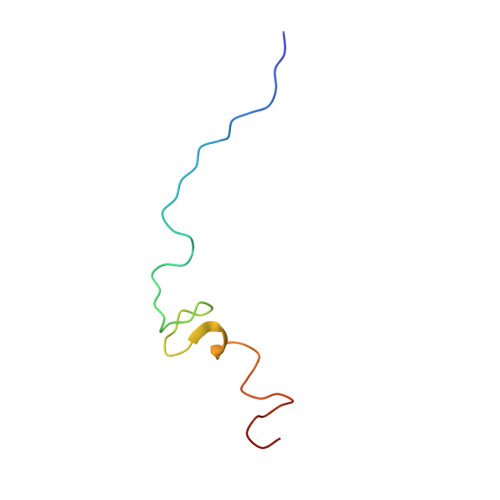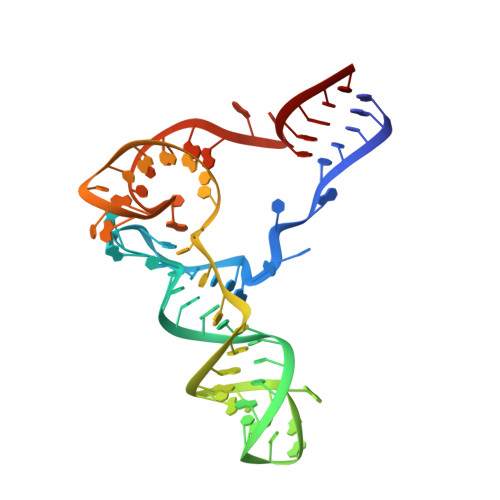A structure-based mechanism for tRNA and retroviral RNA remodelling during primer annealing.
Miller, S.B., Yildiz, F.Z., Lo, J.A., Wang, B., D'Souza, V.M.(2014) Nature 515: 591-595
- PubMed: 25209668
- DOI: https://doi.org/10.1038/nature13709
- Primary Citation of Related Structures:
2MQT, 2MQV, 2MS0, 2MS1 - PubMed Abstract:
To prime reverse transcription, retroviruses require annealing of a transfer RNA molecule to the U5 primer binding site (U5-PBS) region of the viral genome. The residues essential for primer annealing are initially locked in intramolecular interactions; hence, annealing requires the chaperone activity of the retroviral nucleocapsid (NC) protein to facilitate structural rearrangements. Here we show that, unlike classical chaperones, the Moloney murine leukaemia virus NC uses a unique mechanism for remodelling: it specifically targets multiple structured regions in both the U5-PBS and tRNA(Pro) primer that otherwise sequester residues necessary for annealing. This high-specificity and high-affinity binding by NC consequently liberates these sequestered residues--which are exactly complementary--for intermolecular interactions. Furthermore, NC utilizes a step-wise, entropy-driven mechanism to trigger both residue-specific destabilization and residue-specific release. Our structures of NC bound to U5-PBS and tRNA(Pro) reveal the structure-based mechanism for retroviral primer annealing and provide insights as to how ATP-independent chaperones can target specific RNAs amidst the cellular milieu of non-target RNAs.
Organizational Affiliation:
1] Department of Molecular and Cellular Biology, Harvard University, Cambridge, Massachusetts 02138, USA [2] Department of Biology, Georgetown University, Washington DC 20057, USA. [3].
















